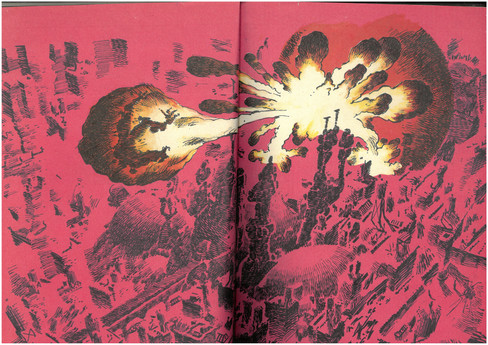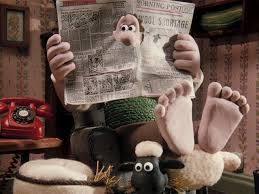March 1st - 2022: Narrative Without words
- havenmilne20
- Mar 1, 2022
- 3 min read
I have begun to look into Narratives for my FMP, focusing today mainly on the aspect of how a narrative is told in artwork, mainly of which is sold on a high sale or made for a target audience, these such being the likes of comics and storyboards, as I felt it would be a good place to start since they are both careers I considering pursuing in the future.
I have a large scale comic collection of my own, some may say it is small but I do not think so. Probably because it has cost me a lot of money to get ahold of all the individual issues, paperbacks and hardbacks that make up my collection. As well, I took a dive into my mind and had a think about my favourite films and shows etc. that also has a strong narrative, this time not in the artwork of the film, as that would be an animation, even though I am about to talk about that, but the visuals in which make up the narrative of the film/show itself.
As I looked and thought about it, I had a thought. Narratives in which are simply told through the visuals and art. No words, no speech, just the imagery in which the audience is viewing.
With this, I had a quick look on the internet, and with the lending of a few books from Richard, two strong titles became prominent in this topic.
One being the famous graphic novel, Ronin, by writer Frank Miller. The second being the storyboards and clips from the the works of Aardman (famous British Animation Company, situated in Bristol), more specifically the character Gromit.
RONIN - Frank Miller:
Frank Miller's work is astounding in my opinion, even in comparison to his other legendary works, such as his run on DareDevil and his game changing mini-series, The Dark Knight Returns, a dark and realistic look at Bruce Wayne and BATMAN, a character in which shows how an old man can change into a brutal, violent and emotionless man, the remains of his long ago shattered heart set on protecting his home in the name of justice, and vengeance.
The artwork in ronin is just as strong and powerful, illustrating the dystopian city which the main character resides in, featured in dozens of double pages free from words, but not from narrative, telling the story through the emotion of the character. In a way, in some ways, these kinds comics/graphic novels act as a readable form of the old silent films, in which one would watch a character act or their story through exaggerated and over the top expressions and actions, which form a narrative and entertain the audience. Those films, and this comic, do the same, as the narrative is heavily focused on telling its story in the imagery, and not with words or text.
Gromit - Wallace & Gromit:
In comparison to Frank Miller's Ronin, the characters seen in the Oscar Award winning series of stop motion films by Aardman, are very important to their especially with how the look and interact with one another, and that is very key with their poochy loyal companion character, and Wallace's companion, Gromit.
Gromit, compared to his other character counterparts, is very simple in design, not taking on Wallaces inhumanly wide grin, or Lady Tottington's overly wide and unbalanced sausage looking hair do. And let's not mention the teeth ahahah.
Yet, he is extremely difficult to get right, both in character and appearance, as he acts as the audiences in anchor into their bizarre and wild world. Don't forget that so far in movie history he is the only dog to ever break that fourth wall, and that is where we really get to see Gromit talk to us, even though he never says an actual word in close to his 40 year existence.
Every thought, feeling and expression he makes is made through his face. Most of the time, its concern for or embarrassment of his owner Wallace, letting us all into his view of his daily life, and adding that bit of British comedy that we love.





















Comments